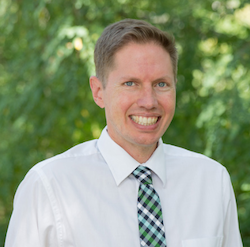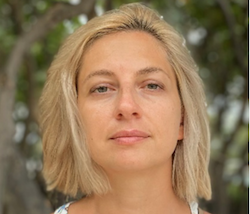Stories From Islita Libre: Digital Spatial Storytelling as an Expression of Transnational and Immigrant Identities
by Jennifer Kahn, Daryl Axelrod, Matthew R. Deroo, and Svetlana Radojcic
I learned some more about the demographics and origins of [my community] especially through story maps because I was experimenting with it … I’d say I got to know more about my community. (Miguel)
On my drive to school, I opened my eyes a little bit more than I have before. I’m like, oh, I never noticed that before. I didn’t see that before. (Jaylen)
These quotations are from high school students sharing their experiences in a semester-long storytelling project where transnational youth used digital media tools and practices to tell stories important to them and their communities. Leveraging interactive digital media is critical for compelling and impactful storytelling in the digital age. For transnational adolescent youth, who engage their lived experiences across two or more nation-states (Skerrett, 2015), digital storytelling (i.e., combining narrative with digital media, such as visuals, sounds, and videos to tell a story; Robin, 2008) creates opportunities to amplify their voices across global contexts and help maintain connections with friends, peers, and family members in other countries (Skerrett, 2015). Digital storytelling can transcend typical time and place boundaries that shape identities, relationships, and worldviews and strengthen connections to global culture and flows of information (Suarez-Orozco & Qin-Hillard, 2004).
In this essay, we (a team of university researchers) share our learning from the Stories from Islita Libre, a project that provided a high school class of racially, ethnically, linguistically, and economically diverse first- and second-generation immigrant students access to digital tools to support digital, spatial storytelling around narratives of personal and community migration. Over four months, we led a series of instructional activities in an eleventh grade introduction to research course. Students learned about various qualitative and quantitative data sources for community-based inquiry, from demographic datasets to photographs, oral histories, and cultural artifacts, culminating in their creation of digital, layered map-based stories (subsequently called story maps) about their local communities. The project drew on digital spatial storytelling practices as methods for conducting community-based research and as means for youth to express their transnational identities.
 Jennifer Kahn, PhD, is an assistant professor of STEM education in the Department of Teaching and Learning and learning scientist at the University of Miami. Dr. Kahn studies how to broaden participation in interdisciplinary, technology-rich activities to support youth learning across community settings, from schools to libraries, museums, and cultural heritage archives. Her current research qualitatively explores how youth and families critically engage with large-scale data and data visualizations to connect personal, local experiences with global social-scientific issues.
Jennifer Kahn, PhD, is an assistant professor of STEM education in the Department of Teaching and Learning and learning scientist at the University of Miami. Dr. Kahn studies how to broaden participation in interdisciplinary, technology-rich activities to support youth learning across community settings, from schools to libraries, museums, and cultural heritage archives. Her current research qualitatively explores how youth and families critically engage with large-scale data and data visualizations to connect personal, local experiences with global social-scientific issues.
 Daryl Axelrod, PhD, received his PhD in education from the University of Miami in Coral Gables, FL and is currently a Research Assistant Professor in the FIU Embrace Center at Florida International University in Miami, FL. His collaborative learning with digital literacies research covers two primary areas of interest. One is emergent bi/multilingual students’ multimodal composing practices, such as how adolescents use mobile devices to compose digital comics for literacy learning. He also examines youth and families’ storytelling practices that incorporate data visualization tools, such as families telling migration stories while examining related census data maps.
Daryl Axelrod, PhD, received his PhD in education from the University of Miami in Coral Gables, FL and is currently a Research Assistant Professor in the FIU Embrace Center at Florida International University in Miami, FL. His collaborative learning with digital literacies research covers two primary areas of interest. One is emergent bi/multilingual students’ multimodal composing practices, such as how adolescents use mobile devices to compose digital comics for literacy learning. He also examines youth and families’ storytelling practices that incorporate data visualization tools, such as families telling migration stories while examining related census data maps.
 Matthew R. Deroo is a former language teacher and teacher educator who spent 10 years in China before getting his PhD. He is an assistant professor at the University of Miami. His interdisciplinary research centers around three lines of inquiry: supporting immigrant youth from a translanguaging perspective, multimodal and semiotic theoretical framing in teacher learning, and community engaged scholarship. Dr. Deroo is a Mandarin speaker committed to supporting teachers and students to draw upon their full linguistic repertoires in support of their learning.
Matthew R. Deroo is a former language teacher and teacher educator who spent 10 years in China before getting his PhD. He is an assistant professor at the University of Miami. His interdisciplinary research centers around three lines of inquiry: supporting immigrant youth from a translanguaging perspective, multimodal and semiotic theoretical framing in teacher learning, and community engaged scholarship. Dr. Deroo is a Mandarin speaker committed to supporting teachers and students to draw upon their full linguistic repertoires in support of their learning.
 Svetlana Radojcic is a doctoral student in the Language and Literacy Learning in Multilingual Settings program at the University of Miami in Coral Gables, FL. Radojcic’s research focuses on the use of multimodal literacies in TESOL classrooms for the purpose of teaching and learning English as a second language. She is also interested in examining how immigrant youth and adult ESL learners engage in digital literacy practices to express their linguistic and cultural identities.
Svetlana Radojcic is a doctoral student in the Language and Literacy Learning in Multilingual Settings program at the University of Miami in Coral Gables, FL. Radojcic’s research focuses on the use of multimodal literacies in TESOL classrooms for the purpose of teaching and learning English as a second language. She is also interested in examining how immigrant youth and adult ESL learners engage in digital literacy practices to express their linguistic and cultural identities.